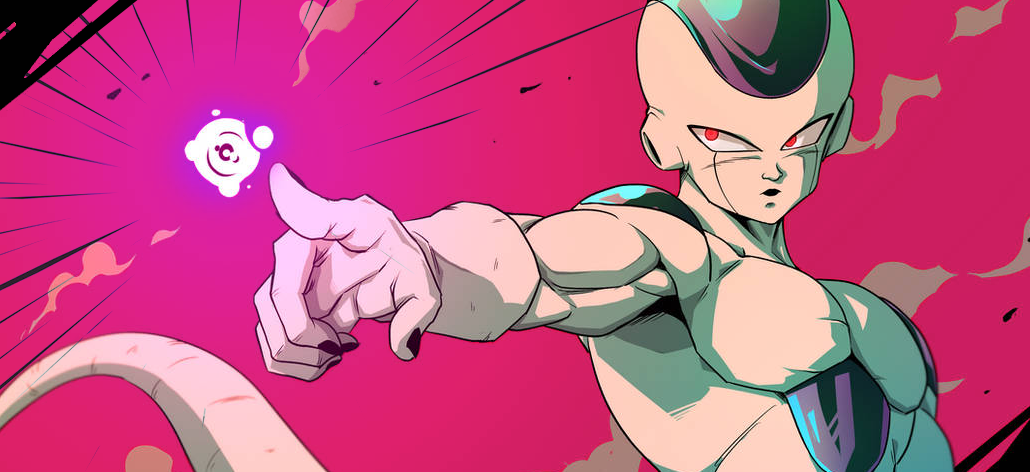
Bearish: Gaming
Games are Art. Dynamic, living experiences. Storytelling molded to each individual through interaction and play. Personal journeys traversing magical worlds. Challenging enough to evoke a sense of achievement. Creative enough to provide respite from life’s pressures. A dance between struggle and flow. Drawing each player into a state of pure immersion.
I wrote that. Sounds… inspiring. Right? There might even be some truth here - Skyrim. Eldenring. Minecraft. But honestly, a whole lot of marketing crap. Simply put, Games are meant to be fun. That’s it.
We don’t have to sift through stuff like that too often. Fortunately. In a world with a bustling multi-billion dollar game industry and fierce competition between established brands and indie developers, we - the consumer - get to choose what to buy. What to play. Trailers. Gameplay. Reviews. If you end up making a wrong decision. Simply request a refund.
That’s not to say there are no disappointments. Games that don’t live up to their hype. Annoying monetarization mechanics. Technical issues. But there are great games all around us. Whatever genre suits your taste. Ancient classics to reminisce over times long past. Game series expanding on great stories. Established multi-player titles attracting millions daily for decades. New releases shaking up the status quo. Fucking mobile games.
And then there’s web3. Blockchain. A step beyond traditional gaming. One that hands players true ownership over their experiences - Items. Achievements. Worlds. Turning them from consumers to creators. A façade of empty promises.
Idea != Execution
Pixelmon. Blankos Block Party. Two case studies revealing the narrative shift of Blockchain Gaming in just 4 years. Their story starts with the rise of NFTs. An idea of decentralized, immutable ownership. Ambiguous and complex at the same time. The perfect breeding ground for half-baked ideas to masquerade as visionary breakthroughs. The Next Big Thing. The Future.
The jump from NFT to Gaming was pre-programmed. So was the downfall. Not led by the disillusionment of pfp gangs or simple oversaturation but by the realization that executing on the idea that sold those 10,000 piece collections meant actual work. Spending of mint funds. Getting your hands dirty. Taking risk.

Pixelmon. The idea - combining Minecraft and Pokemon. Simple enough. There’s an identically called Mod already after all. Anyways. The market loved it. 10,000 unrevealed NFTs (Eggs) changed hands at a price of 3 ETH each. Sure the ‘novel’ Dutch Auction might have helped by spreading confusion. Doesn’t matter. $70,000,000 in a couple hours.
Fast-forward to the reveal. One of those classic This is Crypto moments. A single designer - contracted for $6,000 - rushing to finish the 3d models right up until the deadline. The result? A massive upset. Floor prices crashing. Who would have thought. Yet, in some perverse twist of fate, this disastrous reveal ended up saving the project. Today Pixelmon is still around after being taken over by some fund, raising another $6m and overhauling leadership.

How? Kevin the Zombie. The strongest brand brought forward by the NFT sector to this day. Unironically.

Blankos Block Party. A different story. Starting with a functioning product. Not just an idea. A game that was… surprisingly decent. Fun even. It launched through Epic Games, backed by partnerships with brands like Burberry. Things were looking good. Until they noticed that the game they were building was little more than a vehicle for speculation on in-game items. Skins.
So they gave their players what they wanted. They released skins. Multiple a week. Great ones. Kudos to the design team. The focus shifted entirely to monetization. Effort was put into the marketplace. More partnerships for more skins. Visa payments to simplify buying Skins. Skins. Skins. What about the game? It stagnated. The tiny organic player base withered away. Until Epic Games delisted it. The studio - Mythical Games - has since pivoted to a mobile version and an NFL game. The original vision… left in the dust.
Those two examples were not chosen at random. They are supposed to show that the core issue of Blockchain Gaming is not about Games at all. It’s about the incentive for Creators. About the highly speculative and extractive nature of users. About a game-theoretical dilemma that undermines substance.
Token buyers are investing in the perception & narrative of a game - not the underlying product being successful. […] If the product quality or differentiation has little or no impact, then […] the benefits of having a better game converge to zero beyond a certain point.
Web3 provides an alternative financing source for game developers who can’t get funding from web2 gaming VCs. This capital can be used to build a game for the Web2 audience - setting off on a path crowded with competition from established publishers fighting for user acquisition.
The failure rate of launching a token is lower. So why not just embrace speculation. Embrace the value-extractive nature of this sector. Build the next Pump.fun.
Because only hard things are worth doing.
But… in its current state blockchain technology doesn’t offer marginal benefits over traditional server architectures. Particularly in Gaming. It introduces friction. Performance degradation. Regulatory unclarities. High operational costs. UX challenges. Insufficient tooling. Negative reputation.
Why would anyone build on this brittle foundation. Other than to tap into a speculative user base? Why would anyone try to build something meaningful? To answer that let’s look at the traditional Gaming Sector. More specifically, where it falls apart.
The Gaming Sector
It’s a behemoth. About five times bigger than the music industry. FIVE. Jesus. $184 billion in 2023. Half of that was accounted for by mobile game revenues. The rest split between console and PC (sauce). Even more interesting is the amount spent on online games and virtual items - $26.14 billion. The average gamer spends $6,425 on virtual items during their lifetime. Items. Not games.
So no wonder then that the free-to-play model has been gaining popularity amongst publishers. The incentive model has long shifted from simply getting players to buy a game to increasing customer lifetime value - maximizing the funds spent on cosmetics. Games like League of Legends and CS:GO have been routinely pushing updates, balancing gameplay and introducing new characters and mechanics to maintain a loyal player base. To maintain customers.
Middle finger to Players
All of these games are black boxes. Unfortunately. You can put money in - buy a lootbox, a skin you saved up for, a dance - but you cannot get the items out. That is not an issue if the game continues to exist and receives updates for decades. But that’s not the case for the majority. The minute these games lose traction and the player base starts to dwindle, there is a possibility of the plug being pulled. Servers go down. Items are lost. Forever.
FIFA/EA FC. Take the biggest soccer game. The most played mode - Ultimate Team - is a basic team builder at its core. Open packs. Get players. Build a team. Compete. You can either grind for hours to get a pack or… you guessed it… buy one. FC25 launched recently. Europe went crazy. As every year. Buying pack after pack to get enough coins to buy a good team. Maybe even pack someone useable while you’re at it. A genius way to monetize. Randomized. Dancing dangerously close to gambling. Fun to watch.
This wouldn’t suck if EA didn’t release a new game each year. This wouldn’t suck if the players you collected stayed in your inventory. This wouldn’t suck if the market worked across versions. This wouldn’t suck if there was innovation. But it sucks… real bad.
Each new release requires players to buy the new game for $50-100. Starting all over again. Nothing carried over. Nothing. You lose your entire collection each year. Why would EA change anything? It continues to work. There is little to no serious competition. Year after year, they get to sell an almost identical game to a miserable player base with increasing revenue (see below).
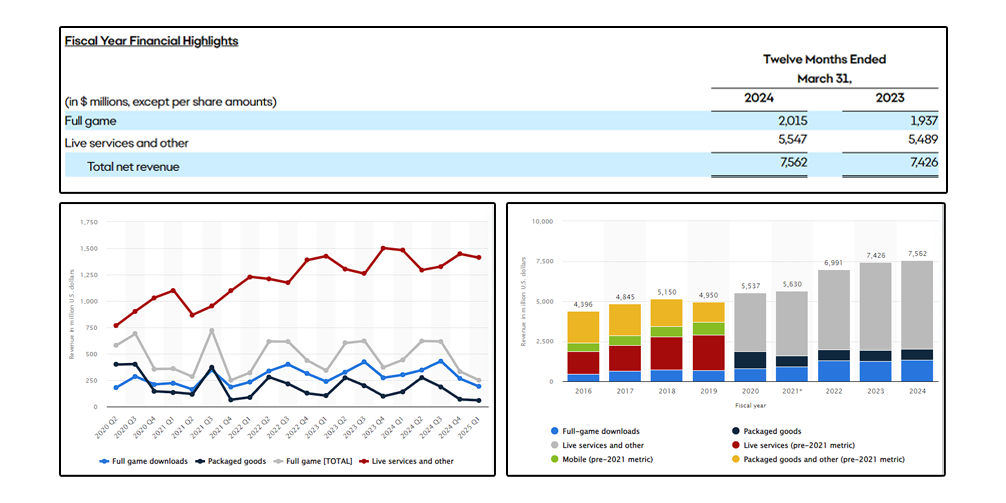
CS:GO - a lesser evil. Again the cycle begins with opening packs - cases this time - but with a key difference. The weapon skins are transferable. Not only through the official Steam market - players can send their skins to any account anywhere. A seemingly simple mechanic… one that enables grey markets and an entire unregulated gambling scene. Users can trade skins for real money bypassing the semipermeable Steam market entirely.
After a steep learning curve, game assets start to appear as more than just cosmetic items. They turn into investments. An entire economy has formed around CSGO with varying investment approaches, analytical tools, trading platforms, asset classes… The pattern-based rarity of skins has created a market where single items can reach staggering valuations, some worth hundreds of thousands. The most expensive item was sold for over $1,000,000.
The opaque nature of these markets means there is no reliable data. Estimates of the market’s cap range from 1 to 5 billion USD, with trading volumes of $32b since 2019. Valve is missing out on their 5% fee and not taking any action to change that. Why? They could… but while this development was not Valve’s intention, it is a positive side effect boosting the longevity and key sales of the game. The giant is merely tolerating this bustling market. Not embracing it.
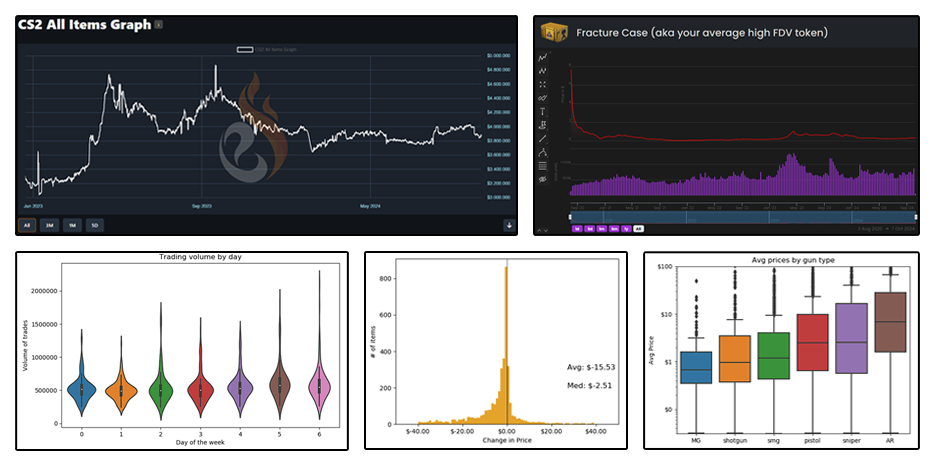
This highlights the potential of breaking the long-standing transferability restrictions put on the majority of user-owned cosmetics. A potential that has yet to be fully unlocked.
Borderless Item Economy
An open economy shifts digital item purchases from mere consumer decisions to potential investments. That can strengthen the longevity of a particular game as seen in CSGO without sacrificing service revenues - Valve made almost $1b through CSGO case openings in 2023. Tolerating free trade allows highly price-insensitive, affluent individuals to buy rare items for increasingly higher prices without incurring outright losses. This skews the payout distribution of cases as far-right outliers attract speculators into opening them.
Such an economy also reveals the inherent financial aspect behind games. A reality some idealist gamers might view unfavorably. Yet, the idea of making money with gaming is as old as the sector itself. It has simply been reserved for a select few. Content Creators. Esports athletes. Until now. Liberating the monetarization stream by allowing free, digital markets means anyone can tap into it. Possibilities to reward exceptionality arise. Skill. Endurance. Creation.
The 2019 Fortnite World Cup comes to mind. A $3m dollar grand prize. Pushing the Esports scene to the top. Motivating players to take part. Try hard.
I remember those nights playing Duos with my friend. We were neither good enough nor interested in qualifying (not coping at all). Those Saturdays in April. In my old room. The attic in my parent’s house. The perfect weather for a long gaming session. Snacks and drinks within reach. Nothing greasy ofc, I wouldn’t want to get my keyboard dirty. The most fun I’ve had playing that game. Any game. Pure fun. Flow.
Back to the topic. It’s hard to get leadership inside a profit-seeking company to support such an expensive event. What if instead the main price became some item. Remember the Dookey Dash key that sold for over $1m?
There are clear benefits to both stakeholders: players and companies. Why is it that not a single major game has embraced such an open model. Regulation. Lack of immediate benefit to monetization. Negative reputation of financialization. There are multiple valid barriers.
This is where Blockchain Gaming has an opportunity to shine. By building infrastructure which introduces open markets at its core. Unlocking the value otherwise lost by players creates a landscape rich in liquidity, speculation and intrigue. A fertile ground for both indie developers and major studios.
Build it and they will come. We didn’t ask banks and financial institutions to come play on-chain. Instead we build better infrastructure and force them to adapt. Memecoins showed the dormant demand for general speculation. Now its time for Blockchain Gaming to unlock the dormant demand for a new asset class - Digital ownership in gaming.
This is the bull case for Gaming. A promise pitched by NFT projects years ago. An empty promise. The technology was not ready. Unable to support on-chain games.
That might be about to change.
Starknet - The fastest Horse
I don’t want to bore you with complex explanations of mechanisms. Spreading knowledge that ultimately won’t matter to anyone but a select few. This is why I chose to take a different approach. One less focussed on quantitative data. Stats. 5,000 TPS don’t matter if there is no substance. So instead of working through documentation and numbers, I chose to play. What a great job I have.
Starknet is my chain of choice. This is not meant to discredit the amazing work done across other ecosystems. At the end of the day they are all pushing boundaries towards one common goal. But… ever since my initial research for the StarkWare - Orange and Blue article, I’ve been… hooked. Starknet-pilled?
This section will consist of a broad overview of the tech stack behind the game ecosystem. About issues to be overcome. About building something eternal. Due to length limitations I chose not to include the various games I tested but instead write separate articles diving into the ones I believe do a lot right. Let’s get started.

Tech Stack
Starknet is a powerful Zero-Knowledge L2 that uses its own virtual machine - Cairo. The purpose-built VM allows for efficient proof generation and opens doors to optimizations not possible on EVM-compatible rollups. In a world dominated by optimistic rollups that are scratching the ceiling of throughput potential, Starknet has plenty of room to grow. For more details read my original article or just trust me bro.
Cairo is inspired by Rust and enables developers to build provable applications more efficiently. Dojo - a provable game engine - was created to further push developer experience (DX) and make onboarding of web2 devs as simple as possible. However even with the performance advantages the next gen Stark Prover Stwo will bring, the costs of L2 transactions might still be prohibitively expensive for hyper transaction-intensive games.
The ecosystem is aware of that, pushing cost-reductive concepts and projects. One idea is to build L3s on top of Starknet, benefiting from its capabilities while creating a more scalable gaming experience. Two solutions come to mind in Katana - a sequencer created in collaboration between Bibliotheca DAO and Cartridge - and Madara - another sequencer designed to facilitate the creation of appchains
A different approach lies in Volition. To understand its potential impact on efficiency and costs we need to realize that the cost of a transaction is largely determined through onchain data availability. Reducing the burden of having to post data to the underlying L1 could cut average transaction costs by up to 95%. This is what Volition enables. In simpler terms: App developers can choose between high theoretical security and low costs.
We’ve speedrun through the essential components of the Gaming Stack and examined how Starknet is addressing 2/3rds of the gaming equation: Developer Experience. Performance. The final element to explore is Innovation. What makes blockchain special. What opportunities emerge from the interplay of those components.
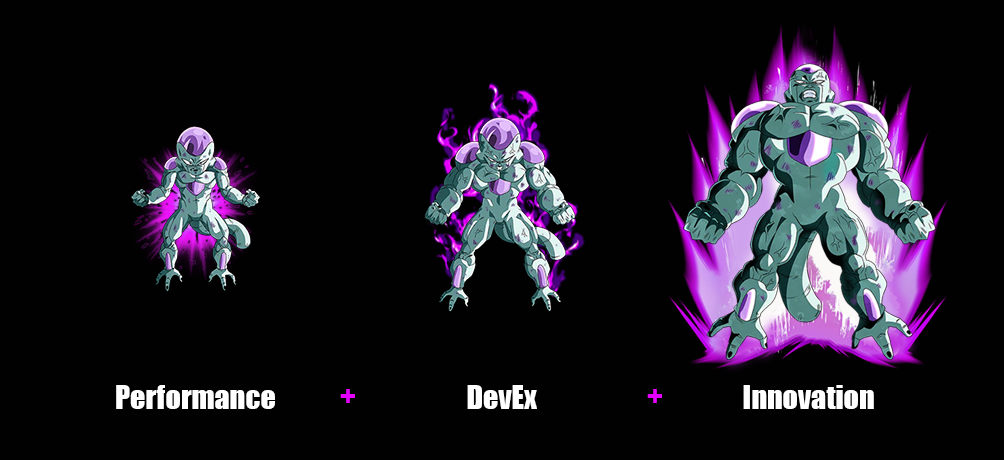
Allow me to paraphrase the single greatest piece of content I’ve read on blockchain gaming in recent months - an extract from the Bibliotheca DAO documentation.
The Quest with no End
We wish to create successful games. Success. What is that? It might be the satisfaction derived from creating. From innovating on known concepts. Finding commercial success. Creating a cultural landmark. All of the above! Allow us to share our thoughts on the nascent gaming genre we are building on the frontier of.
Eternal Games. Think about the games you play. Your favorites. Are they still around. Will they exist forever. No. What if you could create such a game. Something eternal. Something without beginning or end. Governed by players roaming the world. Not controlled by any single entity. Existing on-chain. Forever.
We see a future that blurs the line between developers. Players. Publishers. A future that throws out the code and launch progress of the current gaming industry. Replacing it with ever changing worlds. Steered by a community into different directions. Forked from a common stem into entirely new, unique experiences.
This future isn’t here. Yet. Computational constraints prohibit it. But we have a tool to overcome these limitations. Creativity. In the same way early game developers turned restrictions into art - the original Mario theme music. Pixel aesthetic. Side scrollers. Platformers. - it is now our job to transcend today’s barriers.
The solution. Ethereum Layer 2s. Scaling performance. Decreasing Costs. Improving UX. Account Abstraction.
Hard not to get excited reading that… Ready Player One vibes
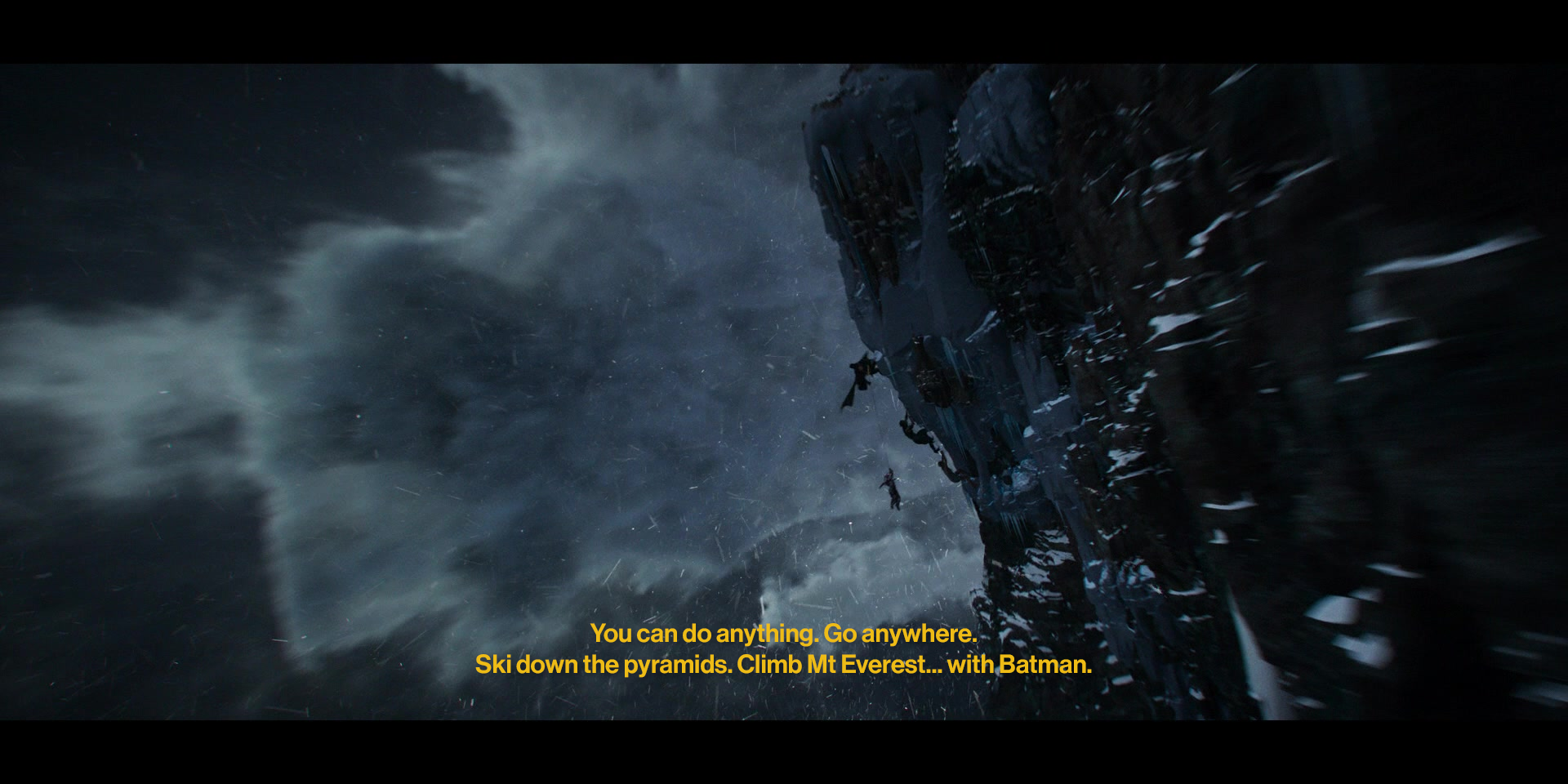
The Games
As mentioned earlier, I dedicated an hour each day playing a game on Starknet - haha, hard work right. Or Realms. I did that for the last 20-30 days. I took notes. Feedback. Issues. Experiences. But I believe you’ve been generous enough with your time in reading until this point so I won’t hold you any longer.
Moving forward, I will create bi-weekly articles focusing on a single game. Alongside an overview and notes I will also talk about concepts I have skipped in this small Starknet Gaming introduction.
I will start by writing down my thoughts on Influence next week. A space strategy game that launched around 3 months ago. The best example of an autonomous world with player-owned assets and economies.
Conclusion
We stand atop a hill. Behind us an ugly past. One of scams. Deceit. Unmet pledges. Yet we stand. Our chests puffed. Not in pride but in anticipation.
We stand atop a hill. Gazing at the mountain ahead. Large enough to evoke dread. Large enough to merit conquest.
We stand atop a hill. Gazing at a mountain. Setting off to approach its foot. Our minds already far ahead, painting the day we finally get to summit it. We’re not there. Yet. But we will be.
One day. At the peak of that mountain. A new world will be born. An autonomous world. An eternal world.
A world on a chain owned by no one - everyone. A world that thrives and shows once and for all the potential of user-owned experiences. Of an open economy.
A world that offers endless opportunities. A world that is no longer simply a promise. No longer marketing crap.
Cheers.